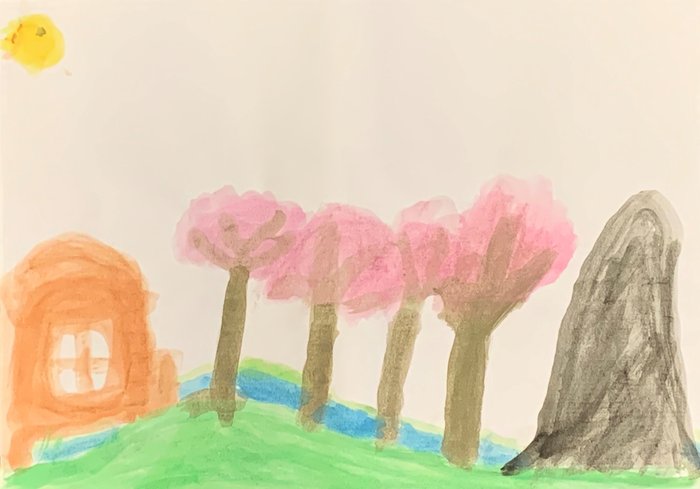
New creative art therapy pilot project to offer emotional support to Camden children in schools
A pilot project offering art therapy in schools across North Central London will offer much-needed support for rising numbers of children and young people struggling with emotional difficulties, following the Covid-19 pandemic.
The Creative Arts Therapy Service (CATS) will offer children and young people support in their schools for emotional wellbeing difficulties, including everything from loneliness, worries, struggles around concentrating, and those with special education needs.
CATS is a service from the Tavistock and Portman in partnership with Hertfordshire University. It is an early intervention alternative to talking therapies and the CAMHS referral route. While these services remain vital, they may not be suitable for all, and can be challenging to access in a timely manner.
Art therapies are increasingly being used by schools in the UK to support children to express and understand their emotions, cope with stress and worries, and develop self-awareness and self-esteem.
“Recently a review of the evidence on children accessing art therapy in schools shows that it improves their concentration and attendance, their peer relationships, and interactions with teachers. Overall art therapy improves and benefits children’s wellbeing and engagement in school,” said Jamie Williams, the arts therapist leading the team behind the project.
CATS can be made available to primary and secondary schools throughout North Central London, and will start in September 2023. If you are interested in being part of the CATS project at your school, please email CATS@tavi-port.nhs.uk to find out more.
The need for art therapy in schools
Since the Covid-19 pandemic, increasing numbers of children in the UK have struggled with their mental and emotional wellbeing.
The Mind report Not Making the Grade paints a bleak picture, with 96 percent of young people in England reporting that their mental wellbeing had affected their schoolwork. 56 percent of school staff said young people who didn’t receive support self-harmed. And 48 percent of young people said they’d been punished for behaviour caused by their mental wellbeing.
And it doesn’t end there. While the Children’s Society reported rises in the numbers of children harmed by domestic abuse, and those experiencing loneliness and isolation, it says far fewer children are coming to the attention of services.
Not surprisingly, the Department for Education, Health and Social Care has said that schools have a role to play in meeting children’s emerging emotional and social needs.
Jamie said: “Only having access to a CAMHS referral route is not the most inclusive way of offering help and early intervention to children. Having an alternative is important. Children need options – particularly ones that can be accessed in school and in the school day. Also, art therapy can be fun. It’s enjoyable to make things, and art therapy can be less stigmatising than talking therapy sometimes is seen to be.”
The art is the way you understand them

In his daily professional life, Jamie sees first-hand how children benefit from having access to arts therapy in schools. He works as an arts therapist and specialist clinician within the Tavistock and Portman’s Integrated Schools Service (ISS). The ISS includes both the Gloucester House School and Gloucester House Outreach. Gloucester House is a therapeutic school with an integrated mental health team that supports children with social, emotional and mental needs, and their families. Gloucester House Outreach works with children and young people to keep them integrated in schools and education, including working with staff teams and networks more widely.
Jamie says, “You’re not using artwork to elicit a conversation, you’re not getting the children to draw to open up, the art object they make is the way you understand them and the way they understand themselves. The process of making that work is quite important.
“It’s a non-judgmental space. The child learns to experience tolerating failure and uncertainty and builds resilience where it’s ok to not have things turn out perfect and not have things turn out the way you’d like them to. It has a passive effect of increasing their resilience. It’s also quite sensory and can be very physical if it’s messy.
“Research is beginning to demonstrate that the act of engaging on that sensory level can regulate children emotionally, to a level where they’re able to listen and to think, rather than being very heightened and outside of their window of tolerances.”
An 8-year-old who did creative arts therapy with Jamie said, “Art therapy was the best club – It helped me with my feelings and I will miss it.”
A 14-year-old Jamie worked with in a school setting said, “Art therapy helped me with my feelings, even when I couldn’t talk about them. I always looked forward to going to art therapy each week – all kids should have art therapy!”
Currently the British Association of Art Therapists says 68 percent of its members work with children and young people, with 35 percent based in school settings.
With more children struggling with their emotional wellbeing post-pandemic, the CATS project team is hoping it can help make a difference across North Central London.
